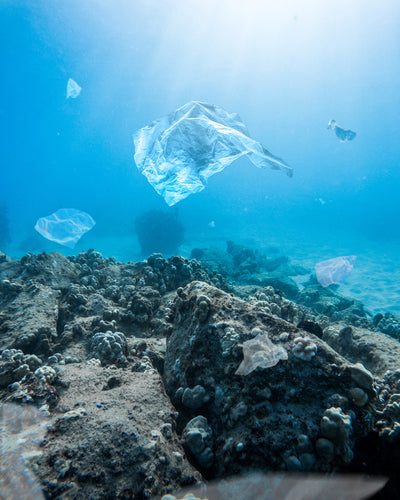In aid of Oceans of Plastic Day, which aims to combat the rising amount of plastic in our oceans, we wanted to explain how this issue affects not just fish and animals in the sea but coral reefs too!
When corals come into contact with pollution, temperature changes or other stressful conditions, they expel their symbiotic algae (zooxanthellae) from their tissue and turn white as a sign of stress; this process is called bleaching. Exposure to pollutants such as plastics can cause bleaching as plastic absorbs UV light from sunlight and heats up under high temperatures, causing damage to nearby organisms like corals whose zooxanthellae depend on them for food production.
Here are some ways that plastic impacts coral reefs:
- Plastic can be ingested by corals. This is particularly harmful to corals because they rely on an animal called a zooxanthellae to produce food for them through photosynthesis. Corals get the zooxanthellae from their habitat in the sea, but if there's too much plastic in the ocean, their chances of finding healthy zooxanthellae decrease.
- Plastic can clog the digestive tract of corals. When algae-like organisms known as Symbiodinium need light to survive, they leave their coral host temporarily and swim up toward the sun—a process known as "epitaxy." If there's too much debris blocking their way out of the coral, it can cause complications because it blocks both water circulation and light access for these tiny creatures that attach themselves onto individual polyps.
- Another way that plastic can negatively impact coral reefs involves toxic compounds found in many types of plastics, which are released into their surrounding environment when they break down over time. When these toxic compounds come into contact with living organisms like corals, they can cause severe damage and death if levels get high over time.
- Ingestion of microplastics. Corals can eat microplastic debris by mistake, mistaking it for food or other materials they consume. This will cause them to become undernourished and lead to them becoming sick or dying. Research also suggests that corals that begin life as larvae may be more susceptible than adult corals when ingesting plastic.
Once plastic enters our oceans, it can take hundreds of years to break down—and even then, it doesn't go away. In fact, the problem is getting worse: every year, more than ten million tons of plastic end up in our oceans. We may be able to live without some plastics like carrier bags and food packaging, but we can't live without oceans—they make up 71 percent of our planet! That's why we need to do something about this problem before it's too late for our environment.

